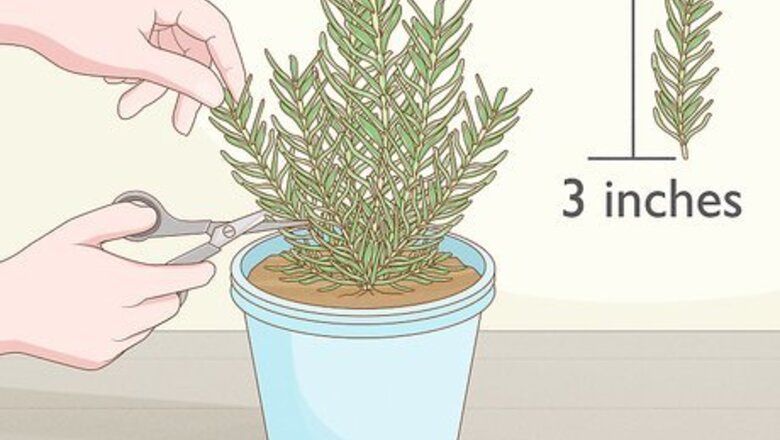
views
X
Research source
However, you can always plant seeds if you don't have another rosemary plant handy. Then, all you need is a pot with soil and a sunny spot to grow your rosemary!
Propagating from Plant Cuttings
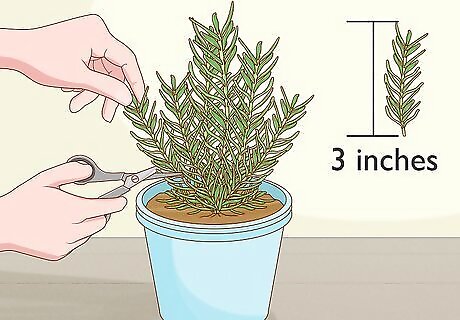
Clip a 3 in (7.6 cm) branch from a healthy rosemary plant. Rosemary grows best if you take a clipping from a healthy plant. Find a healthy plant and clip a branch at least 3 in (7.6 cm) long from the stem. While any clipping will work, it’s best to take the clipping in the spring. This is when rosemary grows, so the plant will be at its healthiest.
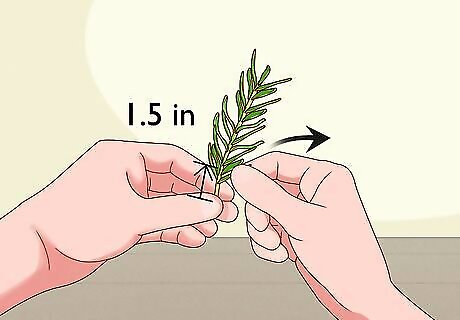
Trim the leaves off the bottom 1.5 inches (3.8 cm) of the stem. The leaves on the bottom of the stem will get in the way when the plant is trying to grow. Use scissors and clip away the leaves on the bottom 1.5 inches (3.8 cm) of the stem, starting from where you cut the branch off the main plant. Don’t tear off the leaves. This can damage the plant. Only clip them with a sharp pair of gardening scissors.
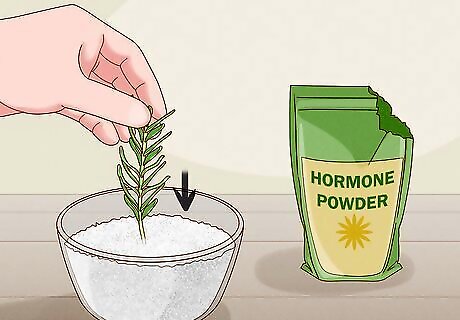
Dip the end of the branch in hormone powder to help it grow. Hormone powder or rooting hormone is like a plant food to help the rosemary get started. Pour a bit of rooting powder onto a plate, then rub the cut tip of the branch in it. Just cover the cut section in powder. This is an optional step, and isn’t always necessary, but it can help the plant grow faster while it’s propagating.
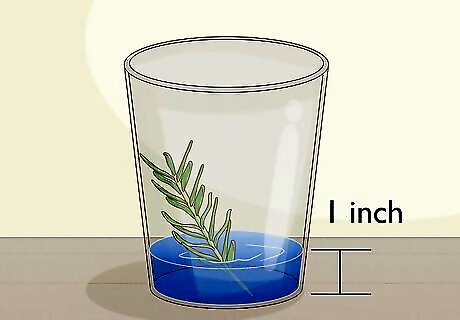
Insert the rosemary into a jar of water. This is a trick to help the plant propagate faster. Pour 1 in (2.5 cm) of water into a clear jar and dip the clipped end of the rosemary into it. The clipping will still probably propagate even if you plant it right in soil without soaking it first. However, it will definitely grow better if the root system is already established before you plant it.
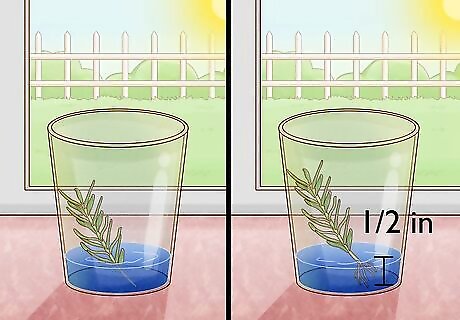
Leave the branch in a sunny spot until roots sprout. Move the jar of water into a sunny spot, like your windowsill. Leave the jar there for a few days until roots start coming out of the bottom. This helps the rosemary grow better in the soil. If it takes more than a few days for the roots to sprout, then change the water. The roots don't have to be long. Just ⁄2 in (1.3 cm) is fine to get the plant started.
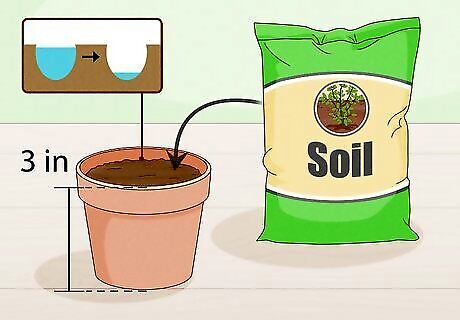
Fill a 3 in (7.6 cm) pot with loose soil with good drainage. Rosemary needs good drainage, so use a pot that's at least 3 in (7.6 cm) deep with drain holes and loose soil that won’t trap water. Fill it with potting soil mixed with sand, vermiculite or perlite for better drainage. Make sure the pot you use has drainage holes at the bottom. Rosemary can die if it gets too much water. You could use a larger pot, but this is the minimum amount of space the rosemary needs to grow. Rosemary is pretty resilient, but prefers soil with a pH between 6.0 and 7.0.
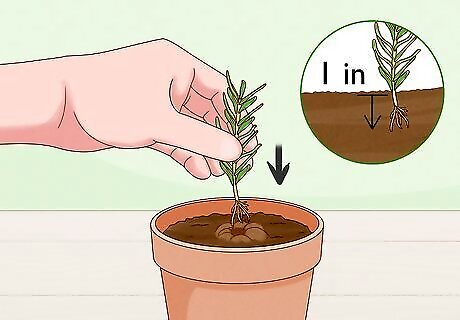
Plant the rosemary cutting 1 in (2.5 cm) deep in the soil. Once the branch sprouts some roots, then it’s ready for the soil. Poke a small hole about 1 in (2.5 cm) deep into the soil and push in the rooted end of the rosemary. Pack the soil a bit so the branch stands up straight. A pot this size can handle up to 2 rosemary cuttings if you want to grow more. Water the plant a bit right after planting it. Just get the soil moist.
Setting up the Right Environment
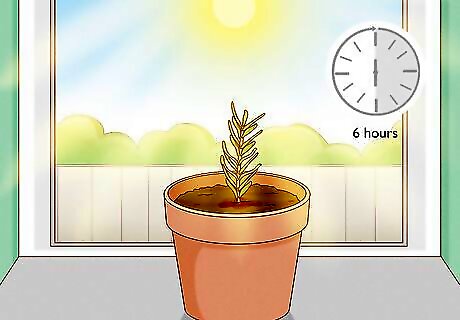
Place the pot near a window so it gets 6 hours of indirect sunlight daily. Rosemary likes a lot of sunlight, so put the plant near a window where it’ll get at least 6 hours of sun per day. Just don’t leave it in direct sunlight. Keep it in this spot through the whole growing process. You might have to move the plant around if none of your windows get that much sun or the seasons change.
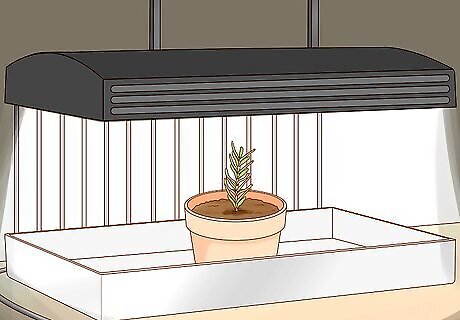
Install HPS or fluorescent growth lamps if you don’t have a sunny spot. You can still grow rosemary inside if your home doesn’t get any sunlight. High-pressure sodium (HPS) or fluorescent lamps can mimic the sun and give your plant all the light it needs. Set one of these up and let it run for 11 hours a day so your plant grows properly. You can also use a fluorescent light if your plant is near sunlight, but doesn’t seem to be growing well. The light can make up for any light deficiencies.
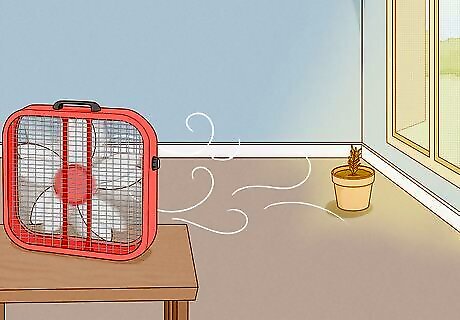
Make sure there is good air circulation to prevent mold growth. Rosemary is pretty resistant to diseases and pests, but mold can grow if the plants get too damp. Leave the plant in a spot with good air circulation to prevent moisture buildup and stop mold and mildew from growing. If there is poor air circulation in your home or you’re seeing some mildew build up, try pointing a fan at the plant to help keep it dry.
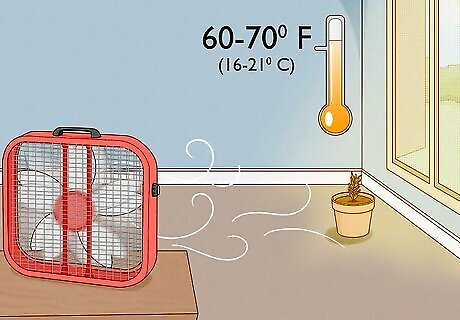
Keep the temperature around 60–70 °F (16–21 °C). Rosemary prefers warmer climates, so don’t let it get too cold in your home. Keep the temperature near 70 °F (21 °C) if possible, but don’t let it fall below 60 °F (16 °C). When the plant is first starting to sprout, warmer temperature might help it grow better. Try keeping the temperature around 75–85 °F (24–29 °C) instead to see if this helps.
Caring for the Plant
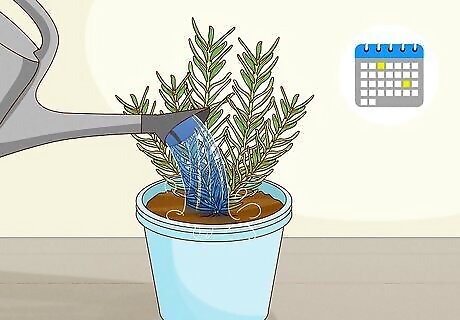
Wet the plant's soil every 1-2 weeks. Rosemary doesn’t need a lot of water, and too much water can cause root rot. Give the plant some water every 1-2 weeks to avoid drowning it. Let the plant and topsoil dry out before adding more water. However, don’t let the soil dry out completely. Only the topsoil should be dry. One recommended method for watering is placing the pot in a larger container and filling the container with water. Let the plant absorb water through the pot's drainage holes for 1 hour, then take it out to avoid overwatering. Use the finger test to see how dry or wet your soil is! Simply stick a finger into the soil, inserting it all the way to the second knuckle. Then, see if the plant is dry or not.
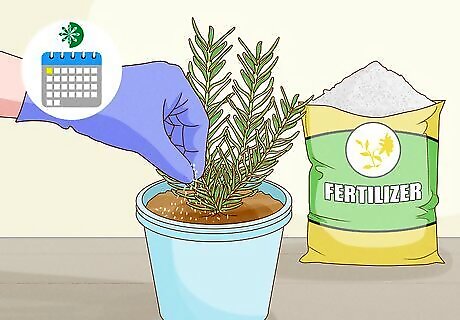
Fertilize the plant at the beginning of the spring. Rosemary usually doesn’t need any fertilizer, but it could help if the plant isn’t growing well. Apply fertilizer once in the spring to give the plant a boost during the growing season. If you took the plant cutting in the spring, then you can fertilize it right away. Use a water-soluble liquid fertilizer and water the plant right after. Only put the fertilizer on the topsoil around the base of the plant. Don’t get any on the leaves or they could burn. Don’t overdo it with the fertilizer. Rosemary actually does better in poor soil than well-fertilized soil.
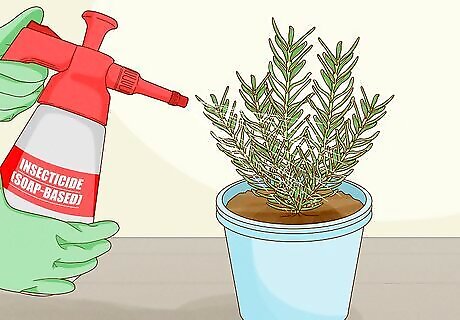
Treat the plant with soap-based insecticide if bugs are a problem. Rosemary is pretty resistant to bugs, especially if you keep it inside. However, there's always a chance that bugs will get to it. If you see any mites or scaly bugs crawling on the plant, then you can apply a soap-based insecticide to get rid of them. Specific instructions vary for different products, but generally you can apply insecticide once a week. Always check the instructions on any insecticide you use so you use it correctly. Fertilizers high in nitrogen tend to make rosemary more vulnerable to bugs, so you might want to use a low-nitrogen fertilizer.
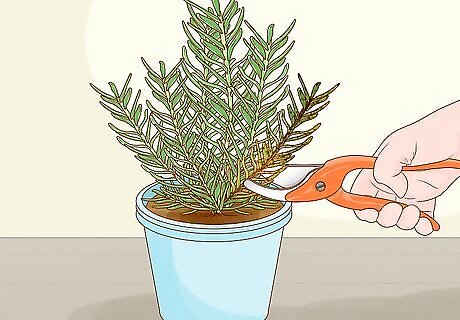
Prune any browning leaves or branches. It's always possible for some leaves to dry out or get an infection. As soon as you see any brown spots, snip them off with a sharp pair of gardening scissors to prevent any problems from spreading. Look especially for brown spots near the plant stem. These can overwhelm the plant quickly. Never pull or tear any leaves off. This could hurt the plant.
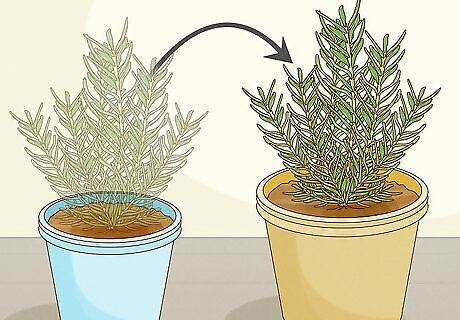
Transplant the rosemary if it outgrows its original pot. You could keep the plant in its original pot if you want to, but if it overgrows that pot, then it's time to transplant. Get a larger pot and fill it with the same type of loose soil that you used in the first pot. Then carefully dig the rosemary out, including its roots, and re-plant it in the new pot. Remember to water the plant right after you transplant it. If you want to move your rosemary outside, it's best to leave it in a pot. Rosemary that grew inside doesn't transplant very well outside.
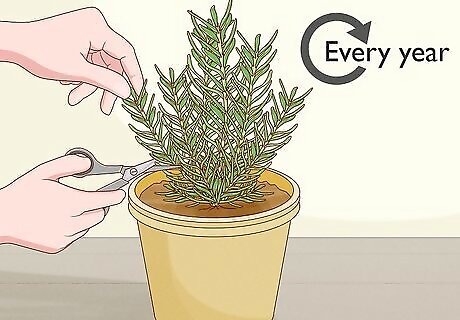
Harvest the plant in about a year if you want to use it for cooking. Rosemary can add a nice, spicy flavor to your meals, so you might want to use some when you cook. However, give the plant enough time to grow first. After about a year, you can take off branches without damaging the plant. Simply snip a few branches off near the stem of the plant and use them however you want. This will take longer if you grew the plant from a seed. It’ll probably be at least 15 months before you can use the plant.

















Comments
0 comment